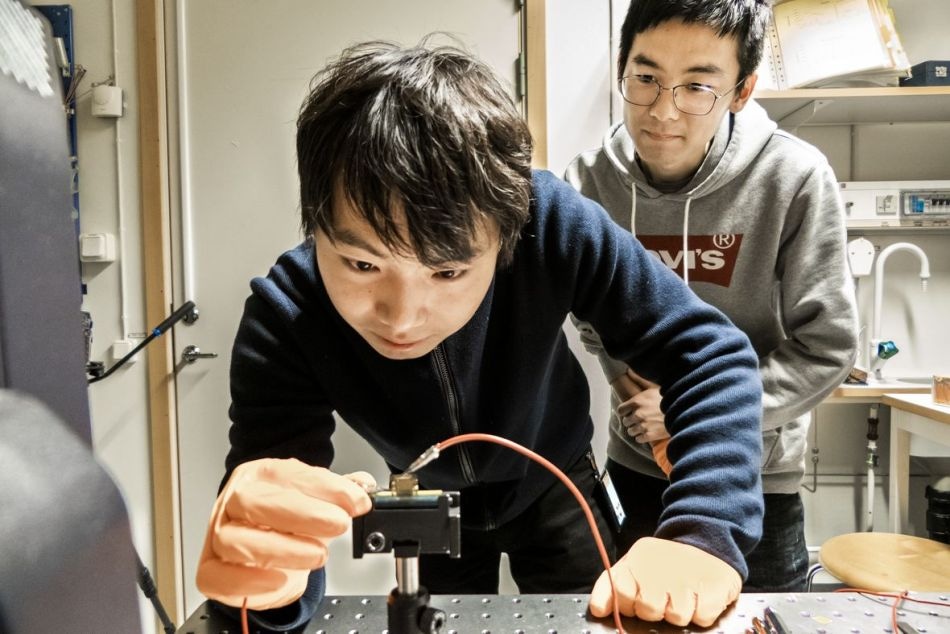Mar 29 2019
Linköping University (LiU) has successfully produced efficient near-infrared (NIR) light-emitting diodes (LEDs) of perovskite in a laboratory. These perovskite-based LEDs have a record external quantum efficiency of 21.6%. The study results have been reported in Nature Photonics.
 Wiedong Xu in the laboratory. (Image credit: Linköping University)
Wiedong Xu in the laboratory. (Image credit: Linköping University)
The study is headed by Feng Gao, a scientist at Linköping University, in close association with colleagues in Switzerland, Singapore, China, and Italy.
Perovskites are a class of materials that are characterized by their crystal structure. Over the past decade, these materials have been extensively studied, first for solar cells and now for LEDs as well. Perovskites are known to possess excellent light-emitting properties and they can also be produced easily. Until now, the external quantum efficiency—that is, the ratio of charge carriers released as light over all of those fed into the materials—of perovskite-based LEDs has been restricted by defects arising in the material at the time of development. These defects function as traps for the charge carriers and, as a result, leads to major energy losses.
Passivation molecules
One approach to address such defects is to incorporate materials called “passivation molecules,” which are capable of binding to the atoms that lead to defects. Earlier, the investigators have identified a molecule containing amino groups at its ends which led to some enhancement in properties. Conversely, when the researchers chose a molecule, which also contained oxygen atoms, the impact increased radically.
We now understand that it is the hydrogen bonds between passivation molecules and perovskite materials that cause problems. This allowed us to search for a molecule that was perfect for passivation.
Feng Gao, Senior Lecturer, Division of Biomolecular and Organic Electronics, Linköping University
The team discovered a molecule that contains a pair of amino groups at its ends, along with oxygen atoms located at appropriate distances between them. The hydrogen bonding potential of amino groups is reduced by these oxygen atoms, which consequently increase the chances that they interact with defects. Thus, the number of traps meant for charge carriers in the perovskite is considerably reduced, enabling the charge carriers to again integrate and produce light in an efficient manner.
Record-high efficiency
This particular perovskite material gives highly efficient light-emitting diodes in the near-infrared region. Near-infrared light-emitting diodes are particularly useful for medical and telecommunication applications. We believe that our new findings can also be applied to perovskite light-emitting diodes with other colours.
Feng Gao, Senior Lecturer, Division of Biomolecular and Organic Electronics, Linköping University
The perovskite-based LEDs have a record external quantum efficiency of 21.6%.
We have developed the best light-emitting diodes in perovskite material yet. They can also compete with light-emitting diodes based on, for example, organic materials.
Wiedong Xu, Postdoc, Division of Biomolecular and Organic Electronics, Linköping University
Feng Gao’s ERC Starting Grant has been one source of funding for the study. Wiedong Xu is a Wenner-Gren Postdoc Fellow, and Feng Gao is also Wallenberg Academic Fellow.